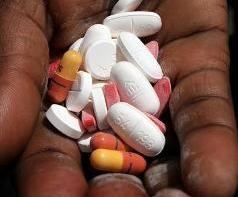Since the AIDS outbreak in the 1980s, people have been scrambling to treat those already infected and prevent further infections. In Africa, especially, there are major obstacles to overcome. This could explain why “two-thirds of the world’s 40 million HIV/AIDS cases are in… sub-Saharan Africa… and 72 percent of the 3 million people who died from AIDS in 2006 were Africans” (Bristol). So how should we as global citizens try to help? To figure out the solution one must recognize the myriad and endlessly complex obstacles getting in the way:
Obstacles to treatment:
- Weak health systems— many African countries suffer from a “brain drain,” meaning medical students leave for school then never return to practice medicine
- Lack of medial workers— “Africa… bears 24 percent of the world’s burden of disease but has only 3 percent of the global health workforce and 1 percent of its physicians” (Bristol)
- Limited funding— most of the people who need antiretroviral (ARV) treatment are not receiving it consistently or even at all
- Stigma of the disease— AIDS carries with it a harsh stigma, causing many to refuse to recognize it for the deadly disease that it is
Obstacles to prevention:
- Cultural norms— many social norms stimulate the spread of AIDS, including objection to male circumcision, prevalence of male-dominated culture, and the tendency of concurrent sexual partners
- Misinformation & lack of education— myths are widely circulated, such as the belief that having sex with a virgin will cure a man of AIDS
- No AIDS vaccine in sight— it will be many years until we even begin to see a cure
While there are differing opinions as to the main obstacle, ultimately we must focus on both prevention and treatment to be successful. So where has the US contributed its funds? Next time I will focus on some of our government’s efforts in Africa.
